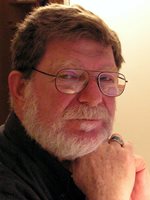Awardee Interviews | Biography: Paul Bagus
Paul Bagus

Paul Bagus received his Ph.D. in 1965 at the University of Chicago under Prof. C. J. J. Roothaan in the Laboratory of Molecular Structure and Spectra, LMSS, directed by Profs. R. S. Mulliken and Roothaan. The LMSS was one of the major centers for the early development and applications of ab initio Quantum Chemistry and Paul Bagus was a major contributor to these efforts. His thesis work on the ionization of closed shell atoms showed, for the first time, that ab initio wavefunction methods could be successfully applied to the core-level excitations measured in X-Ray Photoemission Spectroscopy, XPS. This was followed by demonstrations of the importance of many body effects for the XPS of open shell systems and of the localization of coreholes. Based on this XPS work, he was named an APS Fellow in 1975. Starting in 1968, he spent several years at the IBM Research Laboratories in San Jose where he continued his efforts on the development of rigorous theoretical methods and he began his study of surface processes. This effort was, in large measure, inspired by the outstanding Surface Science program at IBM San Jose. Several of his postdoctoral visitors at IBM now hold significant academic positions. He left IBM in 1993, was a visitor at several institutions, primarily in Europe, and is now a Research Professor in the Chemistry Department at the University of North Texas. He has over 350 publications and his work is highly cited.
Paul Bagus’ theoretical research has focused on topics in two separate but closely related scientific areas: (1) chemistry of surfaces with particular emphasis on the bonding between adsorbates and surfaces and (2) core level ionization and excitation. Essentially all of his research has involved using computations to determine the electronic structure of atoms, molecules, and condensed systems. He has demonstrated that clusters containing a few to many atoms can be successfully used as models of bulk and surface processes since they permit a focus on local aspects of atomic and molecular interactions. An important objective of his research has been to understand the physical and chemical reasons for observed properties. Contributing to this understanding is a role of theory that is easily as important as predicting values for these properties in close agreement with experiment. In order to reach this objective, He has pioneered in the development of programs that can be used to analyze the computed wavefunctions and to decompose the properties resulting from a chemical interaction into contributions from different physical and chemical mechanisms. A recurring theme of his efforts has been interaction and collaboration with experimentalists since this both guides his research efforts and helps to insure that they have a direct impact. These collaborations began during his tenure at IBM and were enhanced with continuing collaborations after his Humboldt Senior Scientist Award, originally made in 1979 with later extensions. In particular, at present, he maintains strong collaborations at the Fritz-Haber Institute, FHI, in Berlin and the Pacific Northwest National Laboratory, PNNL, in Richland, WA.